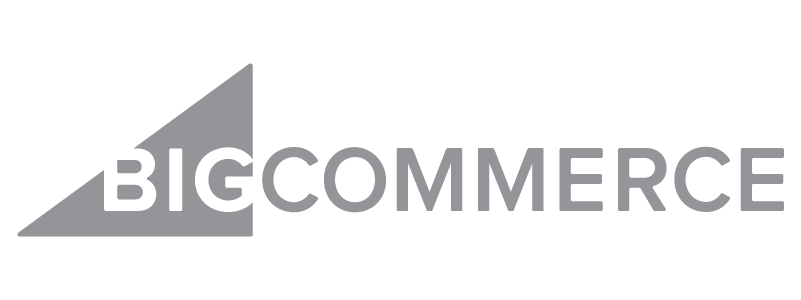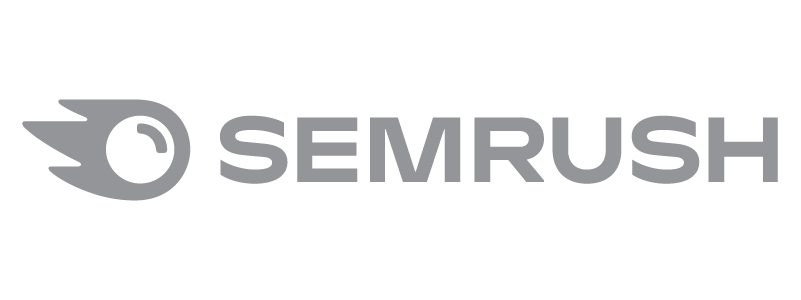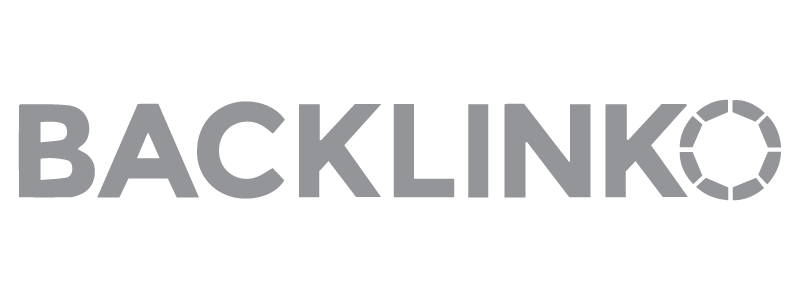This review is sponsored by Sellfy. We do not allow our advertisers to influence the rankings, however.
Sellfy is an up-and-coming ecommerce platform that makes selling online easy. Whether you’re selling digital products, subscriptions, print-on-demand products, or other physical products, Sellfy could be the solution you’re looking for.
Finding the right ecommerce platform for your business plays a key role in your success. But relying completely on a service’s marketing materials won’t give you an accurate picture. Those are written with one goal in mind – to turn you into a customer.
By reading through objective Sellfy reviews like this one, you’ll get a better idea of what you can expect. Plenty of websites out there give their top spots to the highest bidder.
Of course, we get affiliates, but we’ve structured our review process in such a way that they cannot influence the scores. The rating system prevents ecommerce software companies from changing their score. We rate all the ecommerce platforms based on data to keep things as objective as possible.
Why is this so important? We know how difficult it is to understand the finer details of each platform, which can make it hard to truly compare apples to apples.
If you spend resources investing in a platform, only to later determine it will not work for your business, the time and effort it takes to migrate from one platform to another is a hassle.
So, does Sellfy live up to its claims? Keep reading our Sellfy review to find out how it stacks up.
There’s certainly no shortage of ecommerce platforms to choose from, and with big names like Shopify and BigCommerce popping up in nearly every list of the top platforms, it can be harder to explore other options like Sellfy.
Sellfy Overview: What is Sellfy?

The Sellfy platform may not have as large of a customer base as the major players in the market, but that doesn’t make it any less worthy. It’s a cloud-based platform, so all you need is an internet connection and you can access your online store. Your subscription fee covers your hosting expense, and there’s no maintenance for you to have to worry about. Best of all, you don’t need to be a tech wiz to get things up and running.
Like Shopify, Sellfy is an all-inclusive platform that includes everything you need to start selling, including built-in security and marketing tools. You don’t even need a domain name to get started. It’s best for smaller operations and is a great platform if you want to sell digital products.
Sellfy History
Sellfy was established in 2011, as a platform for selling digital products. It has since evolved to be an all-in-one ecommerce solution. Now, creators can sell print-on-demand products, digital products, physical products, and subscriptions all from a single platform, with no extra apps or plugins.
Is Sellfy Right for Your Online Store?
If you want your own website, but don’t have the technical know-how to add an online store, then Sellfy is a great option for you. With the free forever plan, you can sign up and create a store in as little as five minutes. You can really get to know the ins and outs of the platform, with no pressure to see how things work in 14 days.
As a Sellfy creator, you have options:
- Connect your store to your existing website
- Use your store as the main domain
- Use Buy Now and other embed options to make sales from other platforms.
No matter what kind of business you’re running and the product or service you’re selling, Sellfy can work. For some, it may mean investing in the higher-level paid plans, but for others, the basic free plan may be more than enough to get the job done.
Businesses Powered By Sellfy
- Guitarist Dan Mumm
- Photographer Sorelle Amore
- Bad Dog House Games
- Brand Ideas
- Cool Mockups
Sellfy may not power major brands like we see Shopify and BigCommerce doing, but the platform isn’t as big. Currently, Sellfy has a community of 32K users.
Sellfy Comparisons
The Sellfy platform is a software as a service (SaaS), just like Shopify, Wix, and BigCommerce. The company hosts and maintains the software, and your monthly fee covers your access to it without needing to install any software on your computer.
What that means is that users don’t need to concern themselves too much with technical details, and they don’t have to be design wizards to build something that’s both functional and aesthetically pleasing.
While that’s a great thing for many users, those with a more technical background may find it a deal-breaker. Not needing to handle the platform maintenance also means you don’t have as much control over the look and feel of your website. You can’t customize it by making edits to the source code. SaaS means you can get something that’s ready to go out of the box, but so can every other user.
Open-source platforms like WooCommerce give users the freedom to view, edit, and even distribute the source code, however, they’d like to meet their needs. Development is a public, collective effort. If there’s a certain feature your website needs, you can develop it yourself to share with others, or reach out to the development community to pay someone to build it for you.
When building your own website, which type of ecommerce platform should you go for? There’s no clear-cut answer here. It depends on your needs and comfort level with technology.
SaaS is the better choice for people who:
- Need something easy to use
- Don’t require special features or function
- Want something that’s set-and-forget
- Want to integrate other marketing tools and apps
- Have a limited IT budget
Open-source software makes it easy for your in-house team or a third-party developer you hire to build out all the features you want or need your website to have. You control when and how security updates are made, instead of waiting on a service provider to do it on their own schedule.
Sellfy Pricing and Plans

Sellfy offers four plans to choose from: Free, Starter, Business, and Premium. Paying for the annual plan saves at least 34% compared to the monthly plan. All plans come with a free 14-day free trial. There are never any transaction fees or hidden fees, ever.
Starter
Billed at $29/month (or $228 yearly for a savings of $10/month), the starter plan is great for growing businesses that need more than what the free plan offers.
With the starter plan, you can host unlimited products, but can only process up to $10K in sales for the year. A big difference here is that not only can you sell the physical and print-on-demand products, but you can also add digital products and subscription products as well.
You’ll also be able to connect your domain, receive 2,000 email credits, and get email contact migration so that you can manage your business’s email marketing from Sellfy, too.
Business
The Business plan is $79/month, or $588 when billed annually. Annual billing brings the price down to $49/month. With this plan, your annual sales revenue threshold increases to $50K. You get everything from the Starter plan, plus:
- A total of 10,000 email credits
- Product migration (if you’re moving from another platform)
- Store design migration (if you’re moving from another platform)
- Product upselling
- Cart abandonment
- The ability to remove Sellfy branding from your website
Premium
The premium plan is billed at $159/month or $1,118 yearly. Annual billing brings the price down to $99/month. With this plan, you can sell up to $200K worth of products/services in a year. You get 50,000 email credits and priority support.
If you have more than $200K in annual sales, the Sellfy team has an offer for high-volume sellers, but you must contact the company to learn more.
Sellfy does not charge transaction fees on any plan.
Sellfy Features
Sellfy makes online selling simple. With it, you can sell physical products, digital goods, and print-on-demand products.
Sellfy features are hit or miss. For some businesses, the built-in features are more than enough. For larger, more established businesses, the features are quite lacking.
Sellfy Features and Plans
On the starter plan and above, you can sell digital products, use subscription billing, and use email marketing. If you want product migration and upselling though, you’ll need to invest in the Business or Premium plans.
Built-in Marketing Tools
Sellfy includes a variety of marketing options you can use within the platform, such as:
- Email marketing features (plans come with email credits that determine the number of emails you can send every month)
- Discount codes
- Upselling (Business and Premium plans only)
- Tracking pixels
- Analytics tools
This is where the Sellfy software has a slight advantage over Shopify for some users. Shopify doesn’t include upselling in any of its plans, so that means you have to invest in third-party (paid) apps to add the functionality to your store.
Recurring Subscription Billing
If you want to sell subscription products, then you can easily do so with the built-in feature in Sellfy. When you create a new product, Sellfy asks what kind of product you’re offering.
Simply choose Subscription and add the files and information. You can use this to sell annual software subscriptions, workshops, or courses. This feature isn’t available with the free plan, however.
Sell Anywhere with Embeds
Every time you add a new product to your Sellfy ecommerce store, you’re given an embed code that you can use to share the product elsewhere. If you want to sell products on social media platforms, you can use the embed code to list your products for sale.
If you have an existing website, you can also use the embed feature to add your products to that site, rather than migrating your entire small business to the Sellfy platform.
Protect Your Digital Goods
With PDF stamping, you can automatically add customer data like email addresses to each page of your PDF product file. This way, each customer gets a unique file.
With the limited downloads feature, you can prevent buyers from sharing your products online. Each customer gets a unique download link, with limited download attempts.
Basic SEO Tools
Sellfy offers basic SEO features in their dashboard on each page. You can set the page title and URL slug, and provide a meta description. You can also include a featured image for social sharing.
No 1-Click Upsells
Upselling features are included on some Sellfy plans, but none of them offer a 1-click upsell after the customer has added items to their cart and nearly finished the checkout process.
Limited Payment Gateways
Where Shopify and BigCommerce can work with more than 50 payment gateways, Sellfy only works with two. If you don’t want to use PayPal or Stripe to process payments, you’ll have to use another platform.
Sellfy Performance
Sellfy is in the middle of the pack in terms of performance. It’s got blazing fast load times, coming in at just 1.4 seconds. Our average load time is 3.1 seconds. But, it’s a bit lower than average in terms of mobile site speed, and it comes in toward the bottom of average SEO traffic. Overall, the performance rating is just a bit higher than the average score across all the platforms we’ve reviewed.
| Platform | Performance | Load Time | Mobile Speed | Desktop Speed | Avg SEO Traffic |
|---|---|---|---|---|---|
| Shopify | 3.9 | 1.3 | 63 | 75 | 11717 |
| Sellfy | 3.1 | 1.4 | 46.8 | 72 | 134 |
| Zyro | 3.3 | 2.1 | 51 | 89 | 128 |
| Nexcess StoreBuilder | 4.0 | 1.93 | 53 | 72 | 58,645 |
| ShopWired | 4.3 | 1.38 | 56 | 80 | 717 |
| Pixpa | 2.3 | 1.6 | 22.66 | 65.5 | 72 |
| Freewebstore | 3.5 | 1.89 | 53 | 79 | 927 |
| Ecwid | 3.5 | 5.0 | 50 | 82 | 15,517 |
| Square Online | 2.8 | 2.03 | 1.0 | 3.0 | 65,317 |
| BigCommerce | 4.5 | 2.2 | 63 | 80 | 33626 |
| Woocommerce | 3.1 | 3.4 | 42 | 52 | 72968 |
| Shift4Shop | 3.0 | 2.8 | 50 | 58 | 9703 |
| Volusion | 2.9 | 3.5 | 48 | 56 | 15779 |
| Adobe Commerce | 2.8 | 4.8 | 39 | 43 | 19408 |
| Prestashop | 2.9 | 4.62 | 50 | 52 | 33851 |
| SquareSpace | 3.5 | 3.5 | 42 | 63 | 5678 |
| Wix | 3.9 | 3.2 | 69 | 81 | 543 |
| Weebly | 2.6 | 3 | 49 | 59 | 186 |
Load Time
Sellfy’s platform is clearly optimized for page load time, which is a crucial part of the user experience. Sellfy websites load nearly 2x faster than the average. Why is that a good thing? Internet users don’t want to wait to get the information they’re looking for. Google research shows that when page load time goes from one to three seconds, the probability of a bounce increases by 32%.
Mobile Site Speed
When it comes to mobile site speed, Sellfy is only a bit under the average score across all platforms. The fastest platforms on our list are Wix, Shopify, and BigCommerce. The slowest on the list are Adobe Commerce, Squarespace, and WooCommerce.
Average SEO Traffic
We use ranking data from Ahrefs to determine where each platform ranks for the volume of traffic they get for search engines. The more SEO features a platform has and the more SEO-friendly it is, the better because it makes it easier for sites to get traffic.
Sellfy falls dead last here. It’s not really a surprise, given how the platform only provides basic SEO features. But, since the platform makes site speed a priority and does it quite well, it’d be nice to see the users have a better SEO experience, too.
What’s really surprising is that Weebly has slightly better average SEO traffic, despite the fact that it doesn’t load as quickly as the others and has a slower mobile and desktop speed than the other platforms.
Sellfy Integrations and Apps
Sellfy doesn’t have an app store like Shopify or BigCommerce. But, that doesn’t mean you can’t integrate your Sellfy store with other tools you’re using.
Sellfy Integrations and Plans
To make the most of Sellfy, you’ll want to invest in a Zapier account. There’s a free version available, but it limits the number of integrations you can have and how often they run.

With Zapier, you can connect Sellfy with a variety of other apps including:
- SMS Alerts – receive a text message each time you get a new order
- Google Sheets – record sales in a Google Spreadsheet
- Email marketing platforms like GetResponse, Aweber, Active Campaign, MailerLite, Mailchimp
With Zapier, it’s possible to connect Sellfy with over 1,500 apps. Once you sign up for a Zapier account and authenticate your Sellfy account, you’ll be able to set up a variety of automation. When a trigger, such as a new order or new email subscriber, happens, then the zap will run and perform the desired action.
Beyond Zapier integration, you can also set up webhooks to keep track of when you get new email subscribers, unsubscribes, or new orders.
Sellfy also easily integrates with Google Analytics to provide you with key information about your website traffic and search engine performance. You can link Google Analytics to Sellfy in your Sellfy account.
Other integration options include:
- Facebook Live Chat (via plugin)
- Patreon
- Twitter Ads conversion tracking
- Facebook Ads – Tracking Pixel
If you use Wix for your business website, you can take advantage of the Sellfy app in the Wix App Store. The Sell Downloads app comes with a 14-day free trial. After that, you must pay $9.99/month.
Selling Online with Sellfy
Sellfy offers amazing built-in features, including email marketing, discount codes, and upsells. The Sellfy analytics dashboard gives you a quick look at how things are going in your online business.
Sellfy offers online businesses a way to sell a variety of products from a single platform, without investing in a ton of extra bells and whistles. You can use reach customers worldwide, and offer free products as teasers for your digital products if you wish.
One thing worth noting, particularly for those interested in starting a print-on-demand business, is the limited product options, though the platform is making improvements to add more products.

Update: Sellfy has expanded their POD options to include:
- Clothing, including t-shirts, hoodies, sweatshirts, and tanktops
- Hats and Beanies
- Aprons
- Bags, Backpacks, Fanny Packs, and Laptop Sleeves
- Stickers
- Mugs
- Water bottles
- Phone cases
- Posters
Platforms like Printful and Printify offer these same products and many more. And you can integrate them with most ecommerce platforms, too.
Customer Support
Sellfy offers a mobile app so that you can access order information on the go. This makes it easier to provide support to your customers. With the Facebook Messenger Live Chat integration, you can also connect with your customers no matter where you are.
Sellfy offers 24/7 customer support, but phone support and live chat are not available.
Sellfy Templates and Design
Sellfy has a theme store, located in the Store Customizer. You can preview the themes before you choose the one you want to use on your website. Once you click Apply, you must click Publish before your theme will be live.
At release, Sellfy offers five theme options:
- Lumiére
- Noir
- Savant
- Idée
- Mode
| Platform | Design & Themes | Visual Design | Mobile UX | Cost Of Premium Themes | # of Free Themes |
|---|---|---|---|---|---|
| Shopify | 4.0 | 5.0 | 97 | $140 | 9 |
| Sellfy | 5.0 | 5 | 93 | $0 | 5 |
| Zyro | 5.0 | 5.0 | 92 | $0 | 50+ |
| Nexcess StoreBuilder | 4.3 | 3.0 | 94 | $20-$100 | 4 |
| ShopWired | 4.3 | 5 | 93 | $3495+ | 20 |
| Pixpa | 4.3 | 5 | 94 | 0 | 131 |
| Freewebstore | 4.3 | 5 | 92 | 0 | 100+ |
| Ecwid | 4.3 | 5.0 | 93 | $60 | 1 |
| Square Online | 3.7 | 5.0 | 92 | $0 | 1 |
| BigCommerce | 3.8 | 5.0 | 94 | $150 | 12 |
| Woocommerce | 4.3 | 3.0 | 97 | $39 | 1000+ |
| Shift4Shop | 4.3 | 4.0 | 95 | $200+ | 50+ |
| Volusion | 3.7 | 4 | 92 | $180 | 18 |
| Adobe Commerce | 3.7 | 5.0 | 5 | $300+ | 1 |
| Prestashop | 3.2 | 4 | 94 | $29+ | 0 |
| SquareSpace | 4.3 | 5.0 | 5 | 100.00% | 14 |
| Wix | 4.7 | 5.0 | 92 | 0 | 72 |
| Weebly | 4.3 | 5 | 97 | $45 | 15 |
If you don’t choose one of the five themes that are currently available, you can still make adjustments to your store design.
You can upload a logo and a favicon that shows in your browser. It’s possible to change your store’s background color or upload a background image.
You can change the button color and button text color. You can choose from sharp corners, slightly rounded corners, or completely rounded corners.
You can set your font types and sizes. There are a variety of options, but you must use one of the ones they offer.
Your store will automatically feature the following pages:
- Home
- Products
- About
- Contact
- Terms
You can adjust the page layout as needed with the drag-and-drop editor. You can add pages as needed. Modules you can add to page layouts are fairly limited and include:

- Hero block
- Text panel
- Newsletter form
- Products grid
- Contact form
- Embed code
With the addition of the themes store, also comes the ability to customize your product, checkout, and purchase confirmation pages. Beyond being able to customize the pages to match your brand, you’ll also be able to add promotion and ad elements to help you sell more. You’ll also be able to rename the page modules (visible only to you) for easier management and navigation.
Sellfy Ease of Use
Sellfy is incredibly easy to use. The tagline, Build your store in under five minutes, is entirely possible because of how simple the platform is to operate. It’s also possible because your customization options are so limited.
| Platform | Ease of Use | Phone Support | 24/7 Support | Chat Support | Community Rating | # of Apps/ Plugins |
|---|---|---|---|---|---|---|
| Shopify | 4.9 | Yes | Yes | Yes | 5 | 5,000 |
| Sellfy | 3.5 | No | Yes | No | 4 | 4 |
| Zyro | 3.7 | No | Yes | Yes | 4.7 | 30 |
| Nexcess StoreBuilder | 4.5 | Yes | Yes | Yes | 3.6 | 50,000+ |
| ShopWired | 4.5 | No | No | Yes | 4.9 | 72 |
| Pixpa | 3.7 | Yes | No | Yes | 4.7 | 103 |
| Freewebstore | 3.4 | No | No | Yes | None | 25+ |
| Ecwid | 3.6 | 5.0 | 1.0 | 5.0 | 4.7 | 100+ |
| Square Online | 4.0 | 5.0 | 1.0 | 5.0 | 4.2 | 25+ |
| BigCommerce | 4.8 | Yes | Yes | Yes | 4.0 | 1000 |
| Woocommerce | 3.3 | No | No | Yes | 4.0 | 250+ |
| Shift4Shop | 4.3 | Yes | Yes | Yes | 3.0 | ~250 |
| Volusion | 4.1 | Yes | Yes | Yes | 2 | ~20 |
| Adobe Commerce | 2.2 | No | No | No | 4 | 3000+ |
| Prestashop | 2.9 | Yes | No | No | 3 | 3000+ |
| SquareSpace | 3.8 | No | Yes | Yes | 3.0 | 10+ |
| Wix | 4.2 | Yes | Yes | No | 4.5 | 700 |
| Weebly | 3.6 | Yes | No | Yes | 2 | ~350 |
Note that customer service options and developer friendliness are considered in our overall Ease of Use score, since how easy it is to use something is subjective. Sellfy earned a 3.5 here due to limited customer support options and the platform isn’t developer-friendly.
After you create your account, all you have to do is upload your logo, choose your colors, and adjust your page layout to your liking. Then, it’s as simple as adding your products, choosing your payment processor, and launching your store.

Alternatives
If, as you read this, you think that choosing Sellfy may not be right for your online business, consider these alternatives:
Shopify
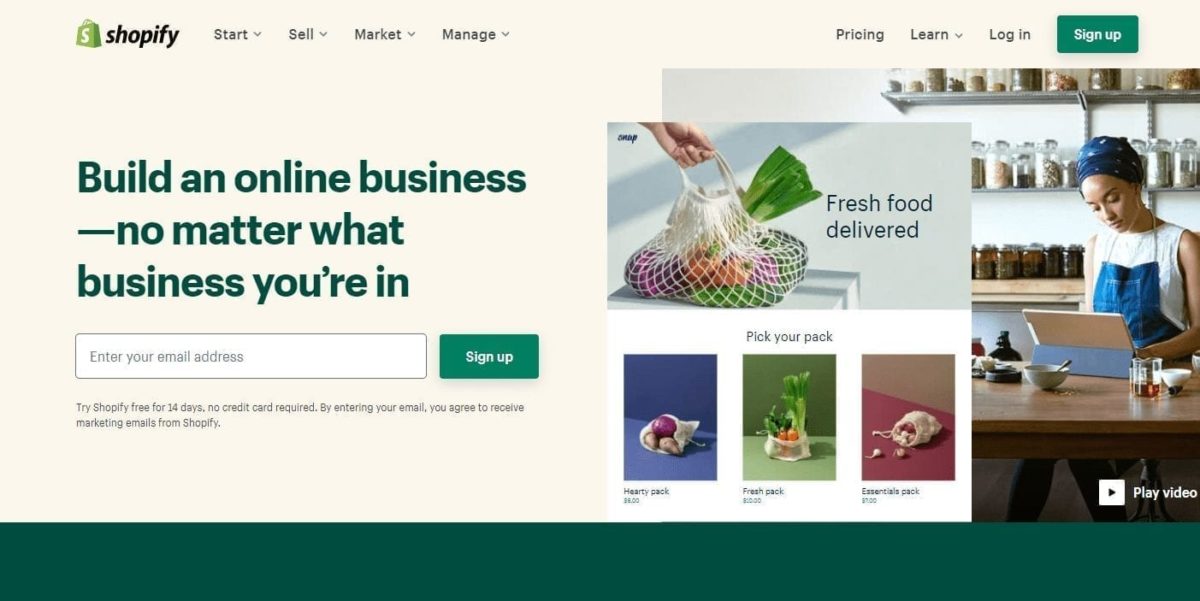
Shopify is one of the biggest names in the SaaS ecommerce platform space. With price points similar to what Sellfy costs, it’s no surprise it’s a big competitor.
While Shopify has Sellfy beat in terms of design flexibility and customization, it doesn’t offer nearly as many built-in tools. A key difference is the volume of payment processors it offers – and the transaction fees it charges unless you use the Shopify Payments gateway.
Wix

Wix is a popular ecommerce software choice for beginners who want a tech-friendly solution. It’s a brilliant solution for small businesses.
And with the Sell Downloads app, you can use Sellfy to handle your product downloads without building a full Sellfy store.
BigCommerce
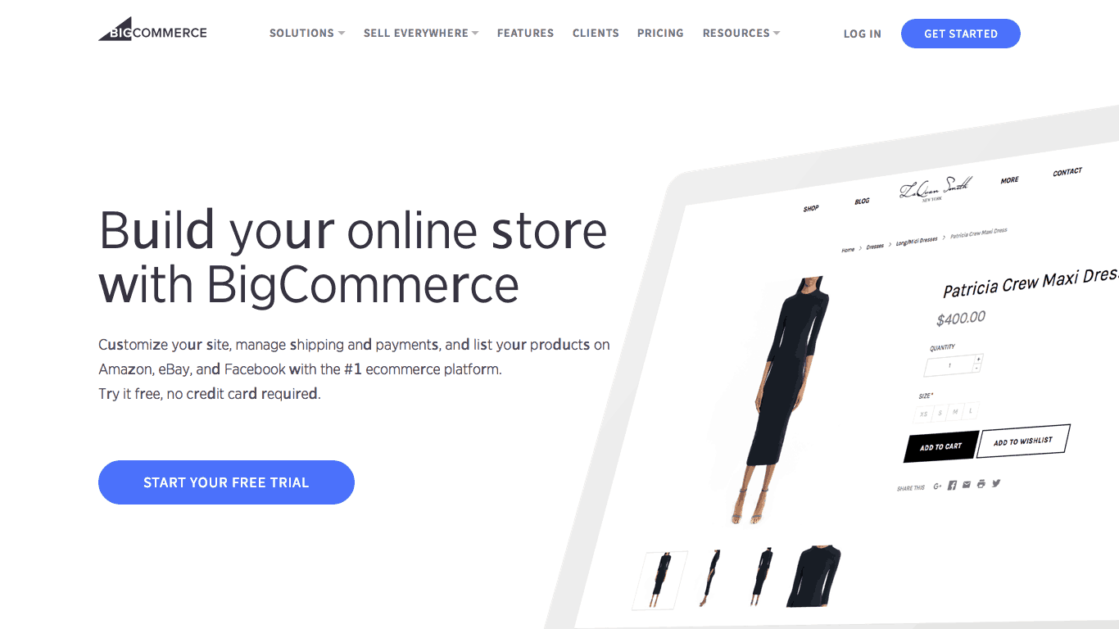
BigCommerce is a major Shopify competitor, though it’s better for larger businesses. When you’re just getting started out, you may not need everything it offers – especially if you have a small inventory.
BigCommerce offers more payment gateways and design options, along with an extensive library of apps and plugins to add more functionality to your store. Integrations are easier and don’t rely on Zapier.
Last, but not least, Zyro is another platform you can consider.
User Ratings and Reviews
If you have experience with Sellfy, we’d appreciate it if you’d leave a review to help our other readers. The goal is to have unbiased reviews, and we can’t do it without you!
If you’re considering Sellfy as an option, part of your research needs is reading user reviews as part of your final decision. We hope our data and objective Sellfy review can be helpful for you, too.
Sellfy FAQs
Is Sellfy Worth It?
For a small business with a limited budget, Sellfy is definitely worth it. It includes a lot of features you have to pay extra for on other platforms. And, you can really get your store up and running in five minutes. Though it doesn’t have the design customization features you’d find on other platforms, it works well for a variety of ecommerce business models.
Sellfy is perfect for those who want to build an online empire with digital products like ebooks, courses, templates, and printables. If you’re using Sellfy for subscription services, you’ll find it quite useful, especially when compared to Shopify. With Shopify, you have to invest in premium third-party apps to handle it.
If using Shopify means you’re paying tons of extra money every month to cover app expenses, it definitely makes more sense to use Sellfy since it handles what you need automatically.
Ultimately, the right ecommerce platform depends on the business you’re running, and how much you want to be involved in the technical aspects. We hope you’ve found this Sellfy review useful and encourage you to check other platform reviews before you make your final decision.



